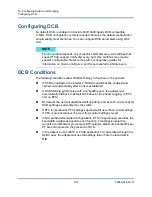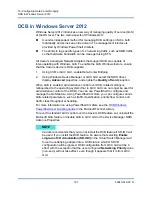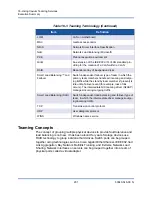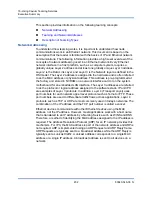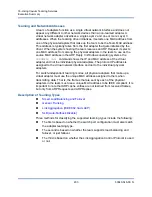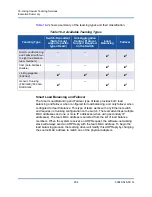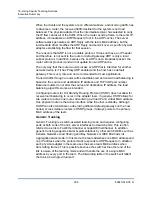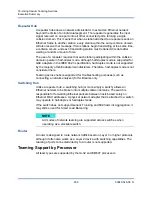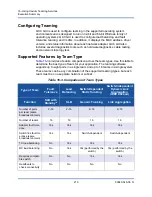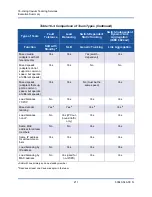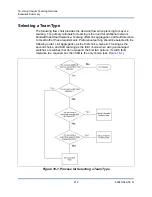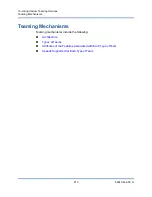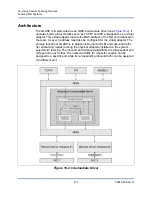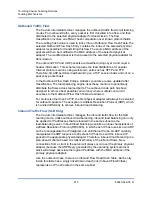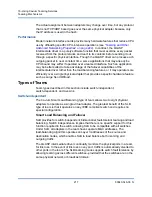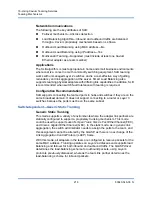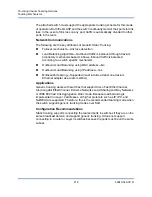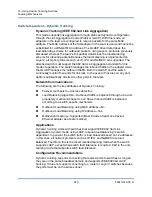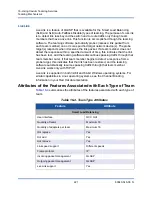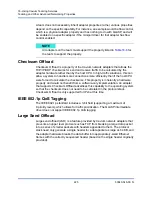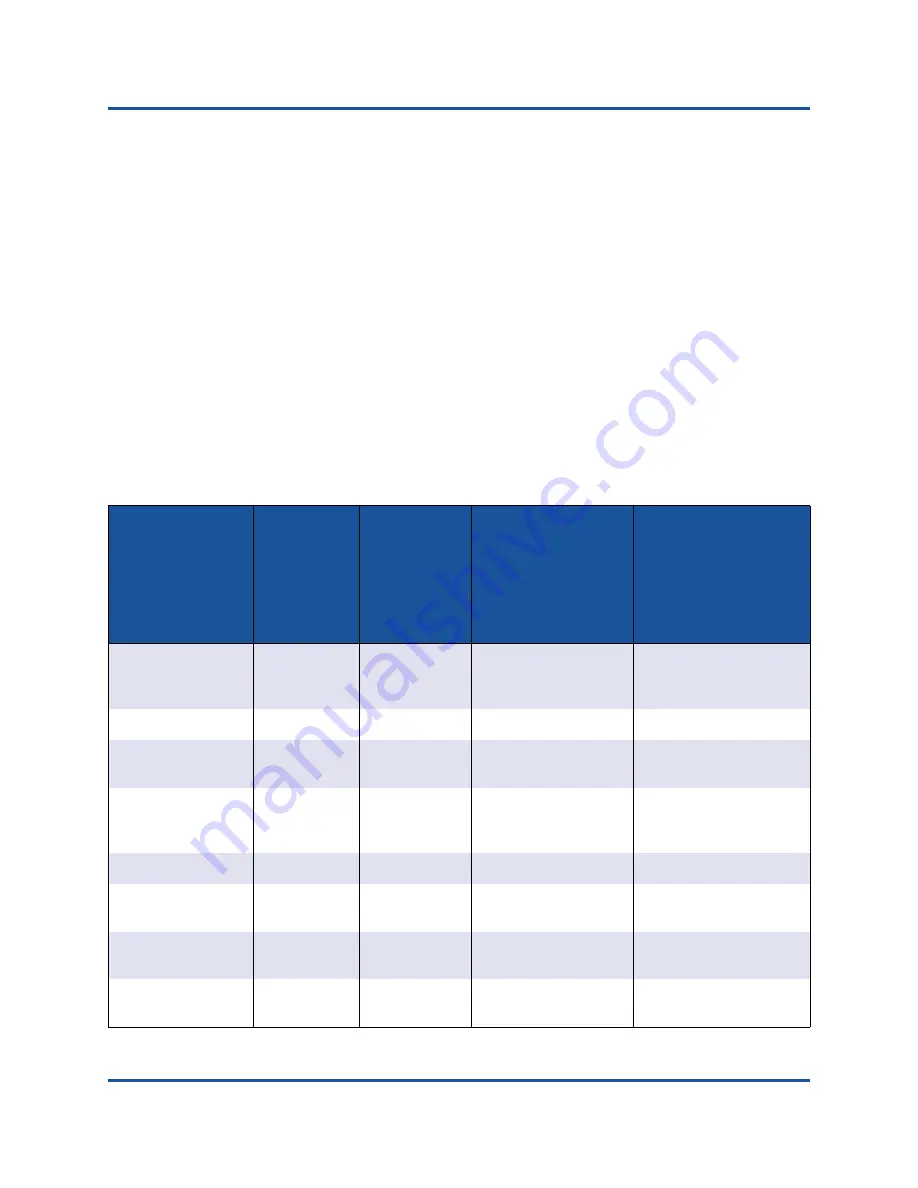
16–Using Cavium Teaming Services
Executive Summary
210
83840-546-00 N
Configuring Teaming
QCC GUI is used to configure teaming in the supported operating system
environments and is designed to run on 32-bit and 64-bit Windows family of
operating systems. QCC GUI is used to configure load balancing and fault
tolerance teaming, and VLANs. In addition, it displays the MAC address, driver
version, and status information about each network adapter. QCC GUI also
includes several diagnostics tools such as hardware diagnostics, cable testing,
and a network topology test.
Supported Features by Team Type
provides a feature comparison across the team types. Use this table to
determine the best type of team for your application. The teaming software
supports up to eight ports in a single team and up to 16 teams in a single system.
These teams can be any combination of the supported teaming types, but each
team must be on a separate network or subnet.
Table 16-3. Comparison of Team Types
Type of Team
Fault
Tolerance
Load
Balancing
Switch-Dependent
Static Trunking
Switch-Independent
Dynamic Link
Aggregation
(IEEE 802.3ad)
Function
SLB with
Standby
a
SLB
Generic Trunking
Link Aggregation
Number of ports
per team (same
broadcast domain)
2–16
2–16
2–16
2–16
Number of teams
16
16
16
16
Adapter fault toler-
ance
Yes
Yes
Yes
Yes
Switch link fault tol-
erance (same
broadcast domain)
Yes
Yes
Switch-dependent
Switch-dependent
TX load balancing
No
Yes
Yes
Yes
RX load balancing
No
Yes
Yes (performed by the
switch)
Yes (performed by the
switch)
Requires compati-
ble switch
No
No
Yes
Yes
Heartbeats to
check connectivity
No
No
No
No

